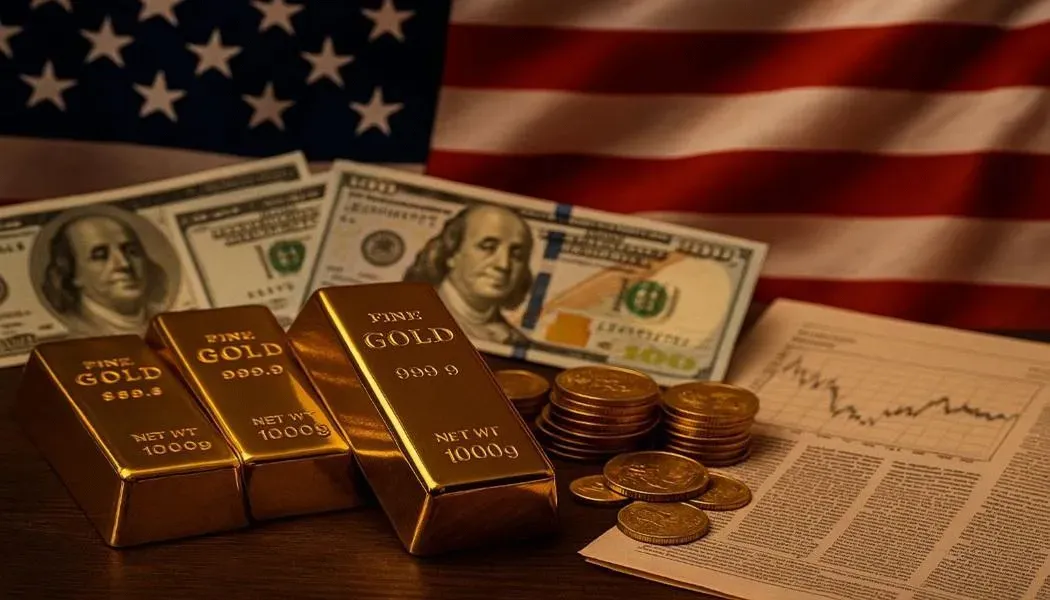
Shifting the Landscape of Gold Trade
On September 5, 2025, President Trump signed an important Executive Order (EO), effective September 8, that could reshape how the U.S. manages tariffs on strategic imports, including precious metals. Among the commodities highlighted are gold bars—both minted and cast—which fall under tariff categories eligible for adjustment once trade agreements with “aligned partners” are finalized.
While this directive does not immediately abolish tariffs, it creates a legal framework for potential tariff reductions. For the bullion community, this introduces both opportunity and uncertainty as investors, refiners, and wholesalers wait to learn which partner nations will qualify for relief.
What the Executive Order Covers
The EO, officially titled “Modifying the Scope of Reciprocal Tariffs and Establishing Procedures for Implementing Trade and Security Agreements”, amends the Harmonized Tariff Schedule of the United States (HTSUS) to permit tariff adjustments. Relevant sections include:
- HTS 7108 – Gold in unwrought and semi-manufactured forms, as well as gold powder.
- HTS 7115 – Articles of precious metals or clad metals.
Key Points for Bullion Investors:
- Framework, Not Immediate Action: Tariffs on gold bars remain in place for now. The EO authorizes reductions—including potential 0% rates—once aligned agreements are concluded.
- Refund Mechanism: Should tariffs be collected before such agreements take effect, U.S. Customs and Border Protection (CBP) may issue refunds to importers.
- Targeted Use: The U.S. retains the right to keep tariffs on non-aligned countries, ensuring trade policy continues to serve diplomatic goals.
Why Source Countries Matter
- Switzerland: As the largest global refining hub, Switzerland’s status is critical. If relief applies here, U.S. gold imports could see major shifts.
- Canada & Australia: Both are top producers and longstanding allies, making them logical candidates for tariff reductions.
- Future Partners: Additional aligned nations may be added, but details remain uncertain.
Until agreements are finalized, tariffs still apply to all imported gold bars.
Implications for Gold Supply
- Potential Growth in Imports: Relief could lead to a larger flow of bullion bars from Switzerland and other partner nations.
- Supply Chain Adjustments: U.S. buyers would likely pivot sourcing toward aligned suppliers, potentially excluding others.
- Temporary Constraints: While awaiting clarity, some importers may delay shipments or hedge exposure, tightening short-term supply.
Impact on Prices and Premiums
- Premium Compression: Once tariff relief is applied, import costs will drop, narrowing premiums for wholesalers and eventually retail investors. Example: a 2% tariff cut on a $3,600 gold bar saves $72 per bar.
- Spot Price Remains Global: The international gold spot price will continue to respond primarily to macroeconomic drivers like Federal Reserve policy, real yields, and central bank purchases.
- Short-Term Volatility: Until agreements are signed and Customs issues guidance, uncertainty may create swings in U.S. bullion premiums.
When Could Relief Be Felt?
- Immediate Term: No change—tariffs remain in place.
- Medium Term: Relief could be felt once agreements with aligned partners (such as Switzerland) are completed.
- Long Term: Tariff policy may continue to evolve, depending on political and diplomatic shifts.
- Administrative Follow-Through: Importantly, CBP must release implementing procedures before lower tariffs translate into real premium reductions.
Investor Outlook
- Collectors & Stackers: Keep an eye on premiums—relief could create a more favorable entry point for buying bullion bars.
- Wholesalers & Refiners: Prepare for possible refunds and realign contracts toward “friendly” suppliers.
- Strategic Investors: Factor in tariff risk alongside traditional market forces like inflation, interest rates, and safe-haven demand.
Key Takeaways
- The Sept. 5, 2025 Executive Order lays the groundwork for tariff relief on minted and cast gold bars.
- Tariffs remain in effect until agreements with aligned nations are finalized.
- Switzerland, Canada, and Australia are the most likely candidates for relief.
- U.S. gold premiums could shrink significantly once relief is implemented.
- Spot gold prices will continue to be dictated by global macroeconomic forces.
Conclusion: Opportunity Ahead, But Patience Required
The recent Executive Order represents a meaningful development at the intersection of trade policy and the gold market. While it does not immediately eliminate tariffs, it opens the door for relief that could reduce premiums and reshape sourcing in the U.S. bullion sector.
For now, premiums remain intact, but the prospect of cheaper, tariff-free access to Swiss and allied gold bars looms large. As trade negotiations progress, investors, wholesalers, and collectors should stay alert—tariff relief could mark a turning point for the U.S. bullion market.
FAQ: Gold Tariffs and the Executive Order
Did the new Executive Order remove tariffs on gold bars right away?
No. The order does not cancel tariffs immediately. It simply creates the legal process to reduce or eliminate them once trade deals with aligned nations are finalized.
Which countries are most likely to be included in tariff relief?
Switzerland is the key player because of its global refining role, while Canada and Australia are also strong candidates due to their production and trade ties with the U.S.
How could tariff changes affect gold premiums for U.S. buyers?
Tariffs raise import costs, which increases premiums. If tariffs are reduced or eliminated, premiums could narrow, lowering costs for both wholesalers and retail investors.
When could lower tariffs actually impact prices in the U.S. market?
Any changes depend on new trade agreements being signed and implemented. The U.S. Customs and Border Protection must also publish guidance before adjustments are reflected in real premiums.
Will changes to tariffs affect the global gold spot price?
No. Spot prices are driven by macroeconomic conditions such as inflation, central bank demand, and interest rates. Tariff changes mainly influence U.S. import costs and domestic premiums.
Another article that may interest you:
Fed Cuts Rates by 25 Basis Points: Impact on Metals & Crypto
Could Gold Ever Reach $50,000? 2025 Perspectives and Possibilities
